An angel on the Camino de Santiago: “Be welcoming”, the new sculpture by Timothy Schmalz, is unveiled
The work, inspired by the Letter to the Hebrews, is an invitation to welcome those who most often endure the indifference of others
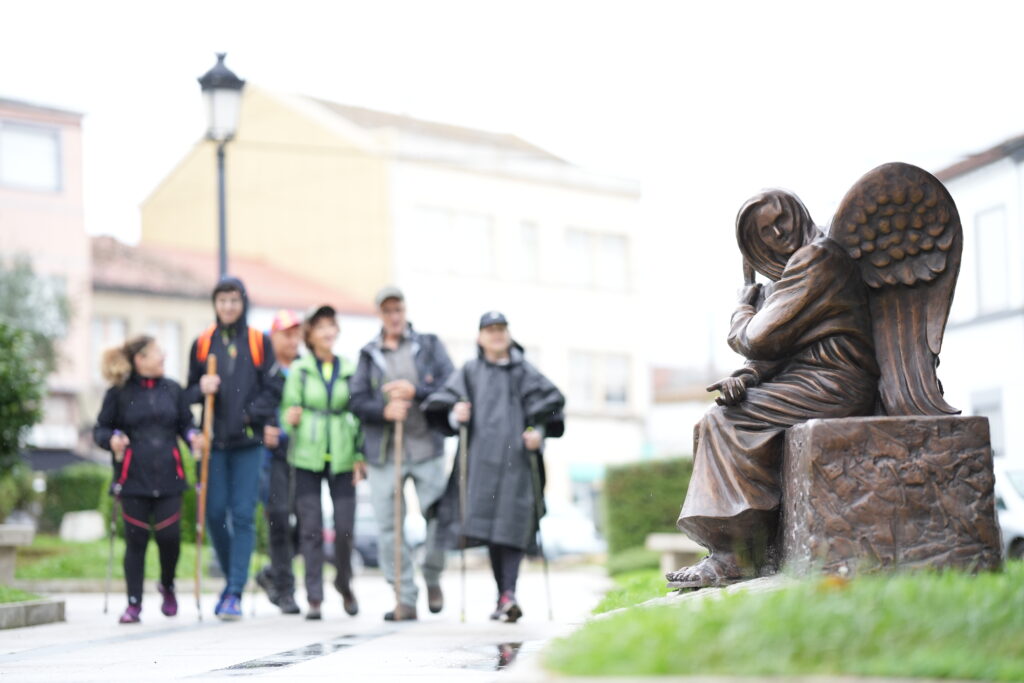
A pilgrim who becomes an angel, an outstretched hand and a place to sit. The new sculpture “Be Welcoming“, which was inaugurated today on the Camino de Santiago, in the town of Melide, Diocese of Lugo, Spain, speaks of welcoming, of pilgrims and of not turning our eyes away from those we meet.
Located a few meters from the Chapel of San Roque, the work is by the Canadian artist Timothy Schmalz, and is inspired by the theme “be welcoming” from the Letter to the Hebrews (“Be not forgetful to entertain strangers, for thereby some have entertained angels unawares”, Heb. 13:2).
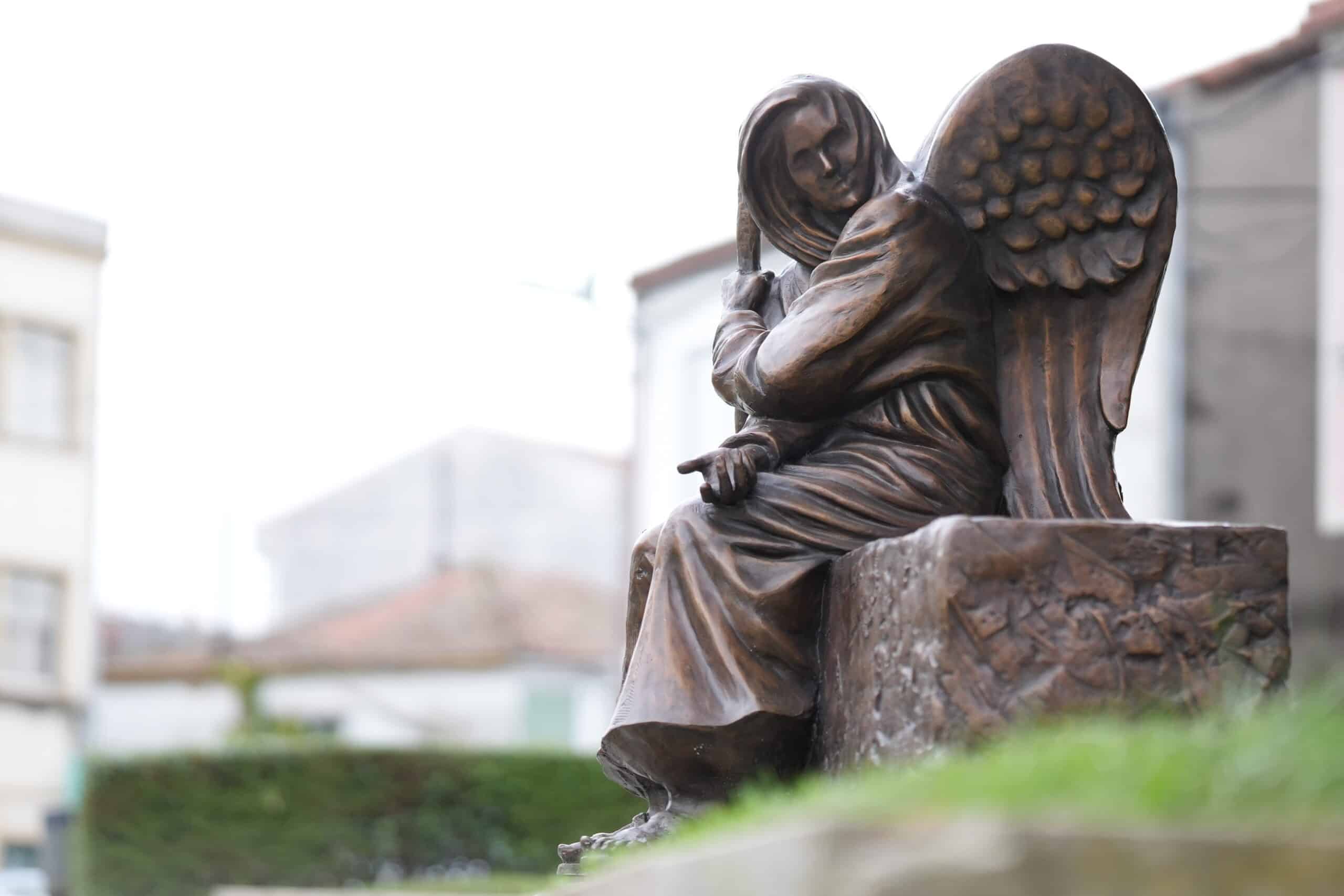 “To be welcoming represents that deep hope of those who set out on the way. That hope expresses very well the idea of the angel that does not abandon the wayfarer,” said the Bishop of Lugo, Monsignor Alfonso Carrasco Rouco, when blessing the sculpture installed in Melide, the place he himself chose. Accompanied by the Episcopal Delegate for Liturgy, Popular Religiosity and Artistic Historical Heritage, José Antonio Ferreiro; the director of the Department of Artistic Historical Heritage, Jesús Salvador; the parish priest of Melide, José Manuel Melle; the Mayor of Melide, Xosé Manuel Pérez; among other authorities, Carrasco Rouco reflected that “pilgrims reinforce the life of the parishes, they invite us to remember that we are welcomed and loved. They invite us to go to Mass, they invite us to turn our gaze to the Lord, they assure us of welcome, reconciliation and home”. In this sense, he added: “For our diocese, the pilgrims who walk the Camino de Santiago are a great wealth”.
“To be welcoming represents that deep hope of those who set out on the way. That hope expresses very well the idea of the angel that does not abandon the wayfarer,” said the Bishop of Lugo, Monsignor Alfonso Carrasco Rouco, when blessing the sculpture installed in Melide, the place he himself chose. Accompanied by the Episcopal Delegate for Liturgy, Popular Religiosity and Artistic Historical Heritage, José Antonio Ferreiro; the director of the Department of Artistic Historical Heritage, Jesús Salvador; the parish priest of Melide, José Manuel Melle; the Mayor of Melide, Xosé Manuel Pérez; among other authorities, Carrasco Rouco reflected that “pilgrims reinforce the life of the parishes, they invite us to remember that we are welcomed and loved. They invite us to go to Mass, they invite us to turn our gaze to the Lord, they assure us of welcome, reconciliation and home”. In this sense, he added: “For our diocese, the pilgrims who walk the Camino de Santiago are a great wealth”.
An invitation to become more welcoming
“Be Welcoming” is an invitation to become more welcoming towards those who too often endure the indifference of others. It is a social issue that Schmalz had already worked on in “Angels Unawares“, one of his best known works that was installed in St. Peter’s Square and blessed by Pope Francis in 2019.
Explaining his inspiration for the sculpture, Schmalz said that for him the verses from the Letter to the Hebrews are “some of the most beautiful passages in the Bible, and this sculpture seeks to bring them to life.”
An interactive sculpture
The sculpture – which was made possible thanks to a donation to the Diocese of Lugo by philanthropist John Studzinski – at first glance depicts the figure of a pilgrim. However, as one goes around it and changes perspective, a new image emerges: an angel with an outstretched hand welcoming the pilgrim.
“The angel is depicted welcoming the viewer to take a seat next to him,” Schmalz notes, “These kinds of interactive sculptures are the ones I like the most. It invites you to become part of it,” explains the creator of “Let The Oppressed Go Free” and “Homeless Jesus.”
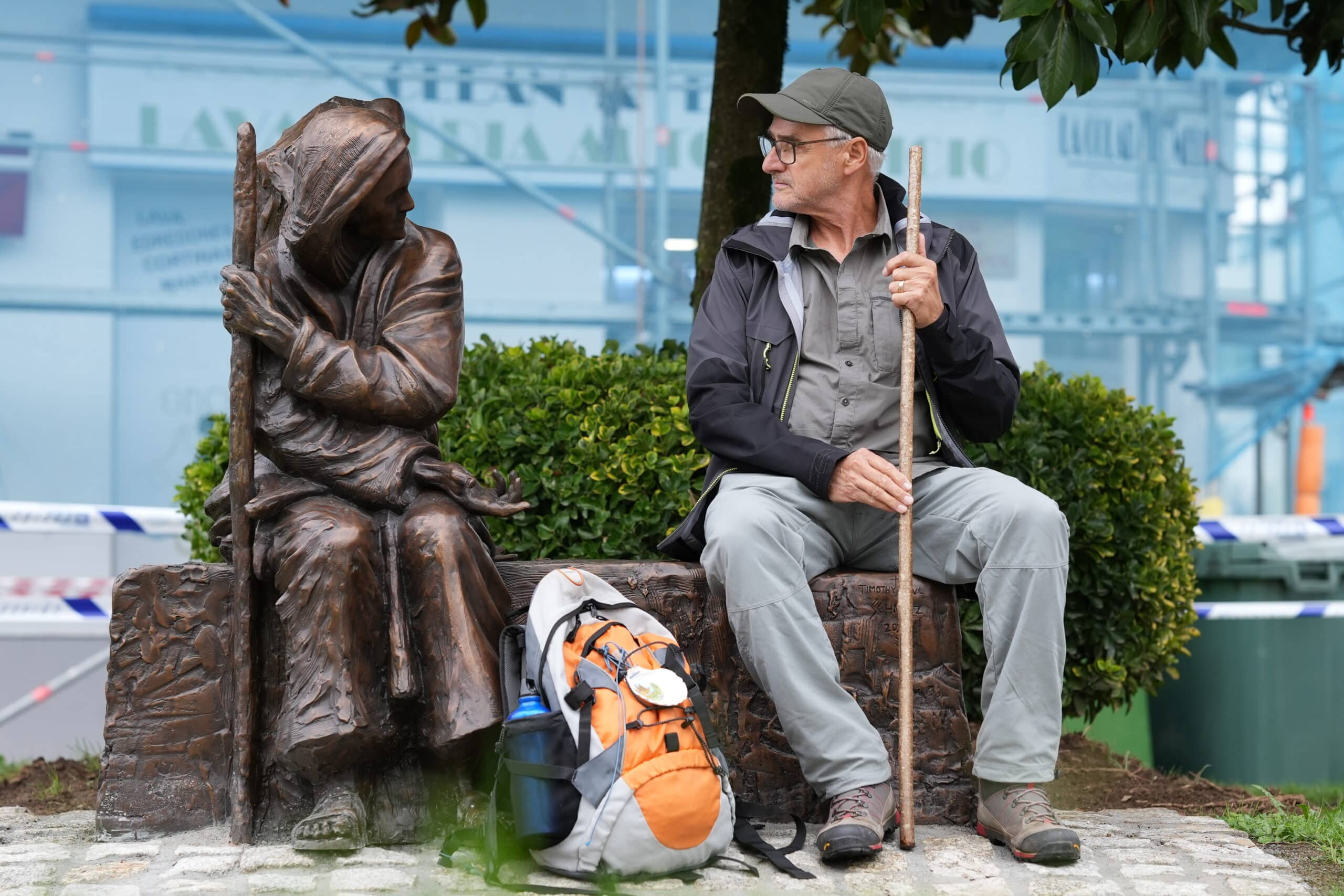 The angel-pilgrim of Melide reaches out his hand to everyone who passes by and invites them to sit down. Schmalz stresses that this outstretched hand “will reach out to all pilgrims welcoming them to contemplate the spirituality hidden within each one”. He further emphasizes that “the sculpture also acts as a monument to all those pilgrims who traveled this Camino looking for the angel hidden within them over many centuries.”
The angel-pilgrim of Melide reaches out his hand to everyone who passes by and invites them to sit down. Schmalz stresses that this outstretched hand “will reach out to all pilgrims welcoming them to contemplate the spirituality hidden within each one”. He further emphasizes that “the sculpture also acts as a monument to all those pilgrims who traveled this Camino looking for the angel hidden within them over many centuries.”
The angel-pilgrim of Melide reaches out his hand to everyone who passes by and invites them to sit down. Schmalz stresses that this outstretched hand “will reach out to all pilgrims welcoming them to contemplate the spirituality hidden within each one”. He further emphasizes that “the sculpture also acts as a monument to all those pilgrims who traveled this Camino looking for the angel hidden within them over many centuries.”
A crossroads on the Camino
The place where the sculpture will be unveiled is full of significance. Melide is considered to be the geographical center of Galicia and is where the French route, which comes from Roncesvalles, and the Ancient Path, which starts in Oviedo, converge.
Here pilgrims travel their final kilometers to the Cathedral of Santiago, located 55 kilometers from the finish line, while enjoying unique landscapes whose origins date back to medieval times.
The Camino de Santiago is an ancient pilgrimage that attracts a large number of people. In 2022, the number of pilgrims arriving in Santiago de Compostela exceeded 435,000, which not only represented a significant increase over the previous year, but also set a new record. The majority of these people converge in Melide, one of the final stages of the pilgrimage. The hope is that this new sculpture will become an attraction for hikers and an opportunity to reflect on the need to welcome those who are different.
About the sculpture
Name: “Be Welcoming”
Author: Timothy Schmalz
Material: Bronze
Dimensions: 1,54 meters (length) x 92 cm (width) x 1,32 meters (height)
Weight: 215 kg
Location: Chapel of San Roque de San Pedro Melide (Rúa Cantón San Roque 38, Melide, A Coruña).
* * *
About Timothy Schmalz
Timothy Schmalz has been building large-scale sculptures for more than 25 years. Schmalz is a figurative artist with pieces installed all over the world. Some of his most recognized works rest in historic sites in Italy, Canada, the United States and the Vatican and have been blessed by Pope Francis. These works include: Homeless Jesus, Angels Unawares, Homeless Jesus, Mary, Untier Of Knots, Sheltering, and Let The Oppressed Go Free. Timothy describes his most important work as visual translations of the Bible. Though most of his work is based upon a spiritual theme, he also creates large, complex public sculptures in bronze. Some of these include monuments that honor veterans and firefighters. Timothy strives to create epic artwork that connects with viewers through design and details that not only touch the viewer on an emotional level, but also allow them to feel somewhat ‘a part’ of the piece. More information: https://timothypaulschmalz.com
About the Camino de Santiago
The Camino de Santiago is an ancient pilgrimage route traveled by thousands of people every year to visit the relics of the Apostle St. James in Santiago de Compostela, Spain. The Camino has been, and continues to be, the oldest, most crowded and most celebrated route in the old continent. Pilgrims make the journey in many different ways: on foot, by bike or on horseback. However, more than 60% of pilgrims choose to walk it. In 2022, the number of pilgrims arriving in Santiago de Compostela exceeded 435,000, which was not only a significant increase over the previous year, but also set a new record. The Camino de Santiago has many variants, however, not in vain; some say that there are as many routes as there are pilgrims. In Spain, there are more than 50, and there are hundreds throughout Europe. Travel time and distances depend mainly on each pilgrim. There are no correct times and correct distances, it depends on what each one can do each day. Those who walk the pilgrimage usually cover between 15 and 20 kilometers per day. More information: https://www.caminodesantiago.gal
About Melide
Melide is the geographical center of Galicia and where the French route, which originates from Roncesvalles, and the Old Path, which starts in Oviedo, converge. It is located 55 kilometers from Santiago, a territory of the Diocese of Lugo, making it one of the last stages of the Camino de Santiago. This iconic Galician town has a population of 7,502 inhabitants, a figure that does not at all represent the number of pilgrims who walk its streets every year. In the 14th century, Melide was enclosed by walls of which nothing remains, as well as protected by an ancient castle, destroyed after the Irmandiño revolts (a series of revolts that took place during the 15th century in the Kingdom of Galicia against feudal oppression). One of the most emblematic places of Melide is the Chapel of San Roque, which was built in 1949, using materials from two other churches of medieval origin that collapsed, the Church of San Pedro and the Church of San Roque. The first of these preserves its original door, built around 1325, in Romanesque style. Next to it is what is considered the oldest transept in Galicia. Castelao himself, one of the most important authors of the history of Galicia, dealt with this subject in his work “As cruces de pedra na Galiza”, stating that it was built around the 14th century. On the front side it presents Christ in Majesty, while on the opposite side there is a representation of Calvary. More information: https://vivecamino.com/melide
02-Be Welcoming by Timothy Schmalz Infographic EN
Related
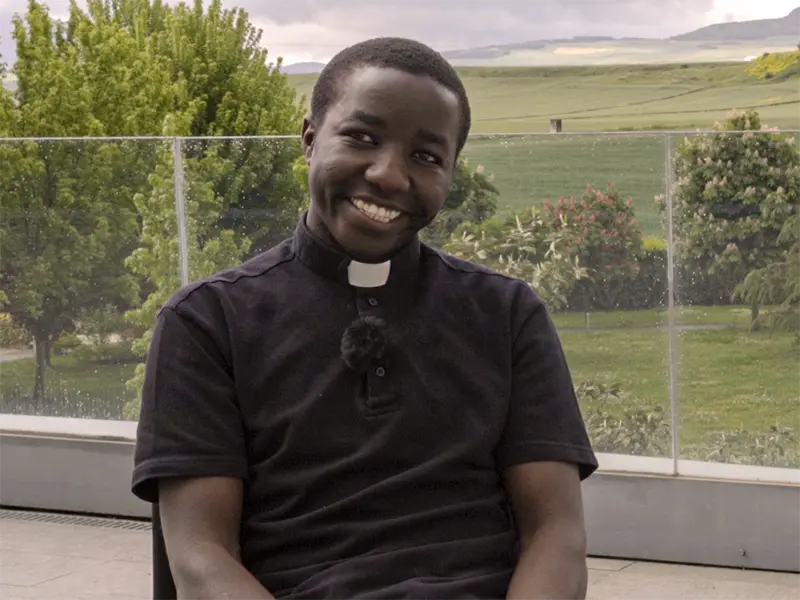
“Being Catholic in Tanzania is a source of pride”
Fundación CARF
16 April, 2025
6 min
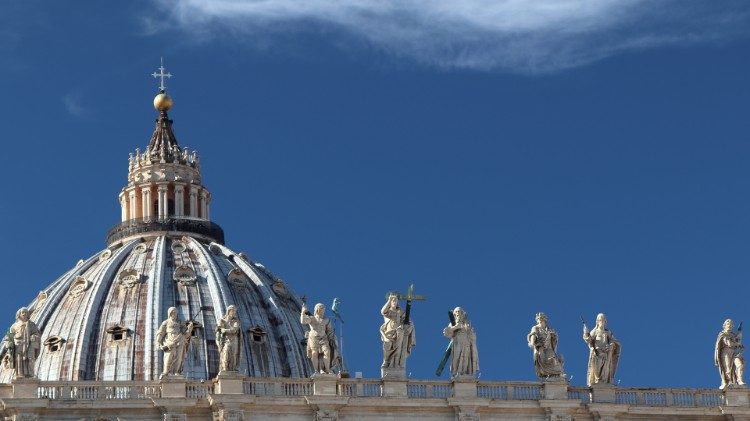
The Vatican Suppresses the Sodalitium of Christian Life After a Long Discernment Process
Exaudi Staff
15 April, 2025
1 min
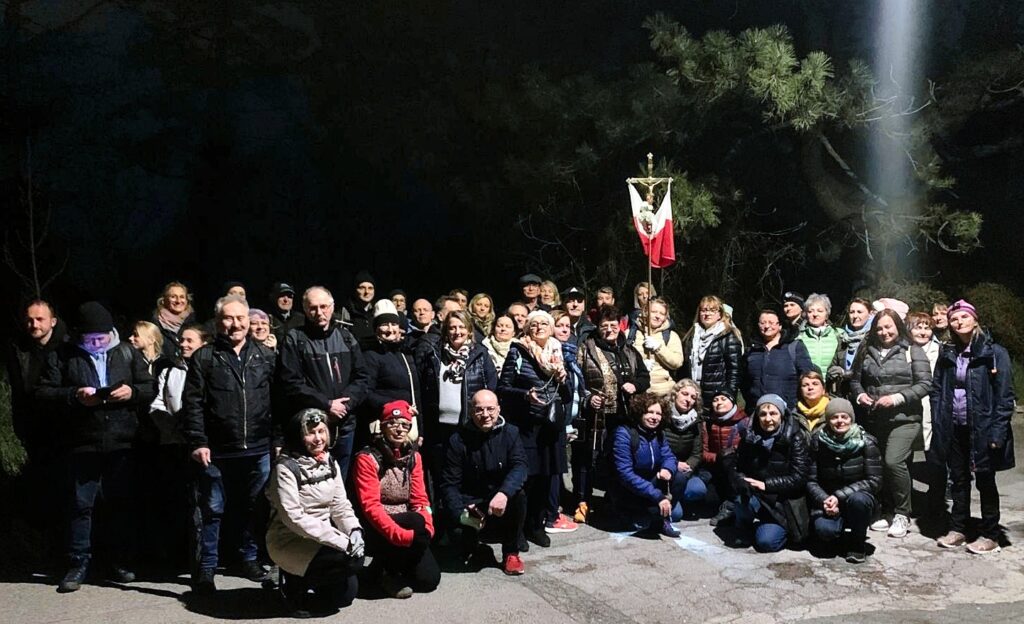
From Kahlenberg to the Papal Cross – Polish Night Way of the Cross in Vienna
Heschel Centre for Catholic-Jewish Relations at the Catholic University of Lublin
15 April, 2025
2 min

“I Will Never Be Herod for the Innocents”
Wlodzimierz Redzioch
14 April, 2025
6 min
 (EN)
(EN)
 (ES)
(ES)
 (IT)
(IT)

